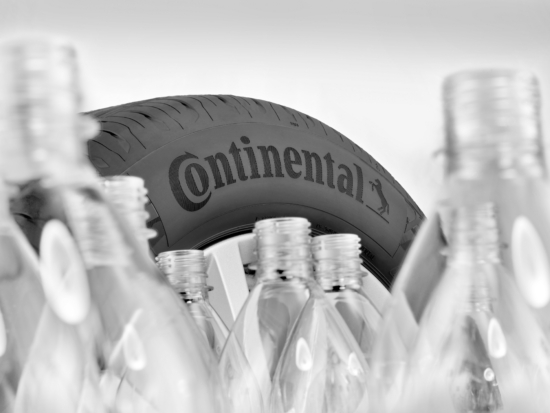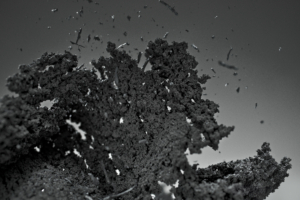Continental tyres to be made from 100% sustainable materials by 2050

In 2020, Continental AG announced its goal of being carbon-neutral across the business by 2050. Also as of the 2020 fiscal year, Continental confirmed that it is procuring all of the electricity for its production sites around the world from renewable energy sources. Now, the German-based tyremaker is emphasising its goal of making tyres 100 per cent manufactured from sustainable materials by 2050.
Indeed, the material experts and tyre engineers at Continental report that they have been working towards that goal “for some time”. Of course, there is still a long way to go but step by step, it is becoming apparent which raw materials will find their way into tyre construction in the future. These include waste products from agriculture – such as the ash from rice husks, rubber from dandelions, recycled rubber and PET bottles.
Claus Petschick, Head of Sustainability at Continental Tires, is clear about Continental’s mission: “Continental is on the road toward becoming the most progressive manufacturer in the tyre industry in terms of sustainability. We aim to use 100 per cent sustainable materials in our tyre products by 2050 at the latest. Our innovative power enables us to break new and even more sustainable ground. This encompasses everything from the origin and sourcing of our materials through to the reuse and recycling of our tyres.”
Continental tyres already made with 15%+ sustainable materials
Already today, around 15 to 20 per cent renewable or recycled materials are used in a standard passenger car tyre from Continental. To further increase the proportion of sustainable materials and conserve valuable resources, Continental continuously analyses and reviews all raw materials used in tyre production.
Sustainability-related changes to the composition of the rubber compound are not readily visible. Passenger car tyres from Continental consist of as many as 100 different raw materials. The ability to deploy the various materials with their properties and interdependencies in specific ways is a complex balancing act for engineers and material experts. Only when all the materials are ideally matched to each other can safe, energy-efficient and durable high-performance tyres be created.
According to Continental, “natural rubber is essential for ensuring outstanding tyre performance” and accounts for between 10 and 40 per cent of the weight of modern high-performance tyres. Its properties include its high level of strength and durability, which are caused by the strain-induced crystallization of the rubber.
The tyre industry is the biggest consumer of global rubber production, accounting for more than 70 per cent (73 per cent according to the Fraunhofer Institute). Continental considers natural rubber a sustainable material only if it is sourced responsibly. And at the same time, with its Taraxagum project, Continental is working to become less dependent on natural rubber grown primarily in southeast Asia.
In addition to rubber, fillers such as silica are essential to tyre assembly. Silica, for example, helps to optimize characteristics such as grip, rolling resistance and tyre life. In the future, rice husks will be used as the source material for sustainably produced silica. Rice husks are a waste product of rice production and cannot be used as food or animal feed. Silica derived from the ash of rice husks is more energy-efficient when used in manufacturing than that obtained from conventional materials such as quartz sand.
Plant-based oils – such as rapeseed oil and resins based on residual materials from the paper and wood industries – already offer an alternative to crude oil-based fillers in Continental’s tyres. Only oils that meet technical quality standards and are not suitable for consumption are used. Oils and resins allow for flexibility in terms of tyre compounds, and so improve the material’s grip.
Fully circular operations by 2050
Continental is aiming for fully circular operations in its tyre production by 2050 at the latest. In addition to the use of renewable materials, the company is working systematically on using recycled raw materials in tyre production. This is intended to ensure that carbon black – another crucial filler in rubber compounds – can be obtained on a large scale in the future.
Continental recently signed a development agreement with Pyrum Innovations with a view to further optimizing the recycling of materials from old tyres via pyrolysis. Both companies are working towards obtaining high-quality raw materials from the pyrolysis oil obtained for Continental’s tyre production in the medium term, in addition to the direct use of high-quality carbon black. In the long term, Continental and Pyrum are aiming to establish a closed-loop circular economy concept for the recycling of old tyres.
In addition to pyrolysis, Continental is also making use of mechanical processing of end-of-life tyres. Rubber, steel and textile cord in particular are separated, in a highly sophisticated process, from one another. The rubber is then prepared for re-use as part of new rubber compounds.
Continental has a long history of working consistently to introduce end-of-life tyres into the circular economy to conserve resources and the environment. A material known as “Conti-Reclaim” has been obtained as part of the truck tyre retreading process at the company’s plant in Stöcken in Hanover since 2013. It has been used in tyre production at Continental for years. To expand the range of applications for the recycled rubber and optimize the properties for the various fields of application, Continental uses not only “Conti-Reclaim” but also recycled rubber from other suppliers.
“Recycled raw materials are going to play a big role in making tyres more sustainable. We use recycled materials whenever possible. Comparable quality and material properties to conventional raw materials are crucial for us,” says Petschick.
For example, Continental is working with partners to obtain high-quality polyester yarn for its tyres from recycled PET bottles. PET bottles often end up in incinerators or landfills otherwise. With its ContiRe.Tex technology, the tyre manufacturer has developed a more energy-efficient and eco-friendly alternative that allows it to reuse between nine and fifteen plastic bottles for each tyre, depending on the tyre size. The recycled PET has already replaced conventional polyester in the structures of some tyre casings. The PET bottles used are sourced exclusively from regions where there is no closed recycling loop.





Comments